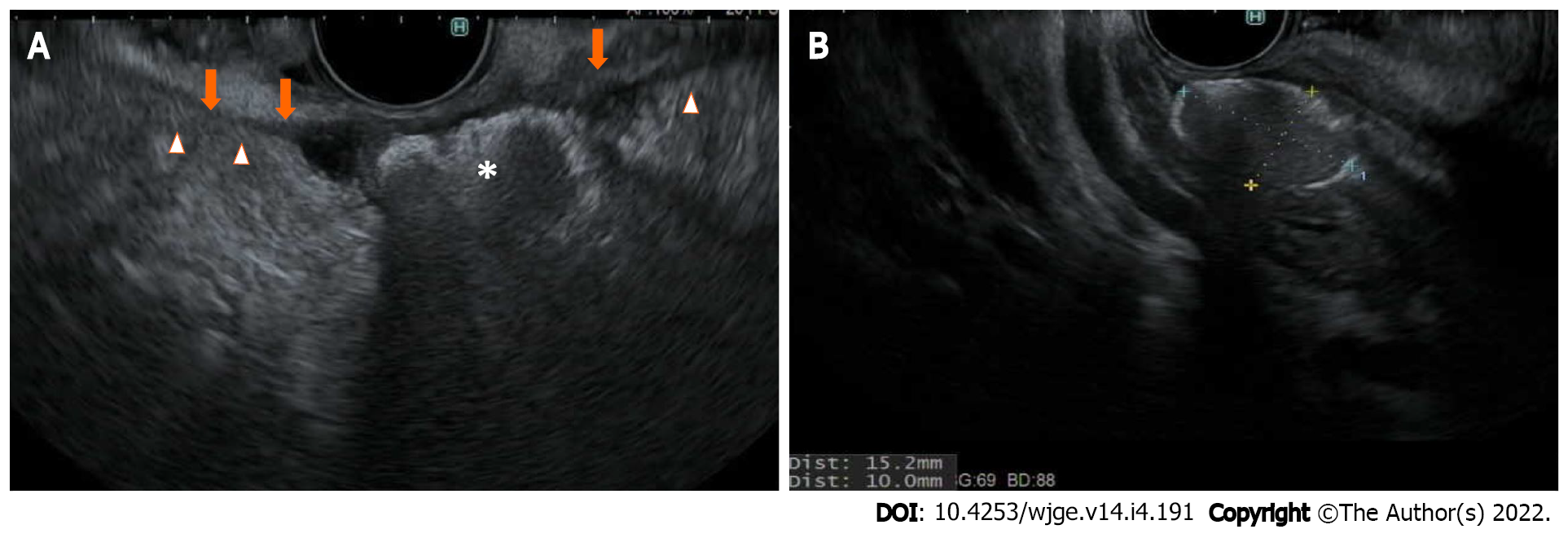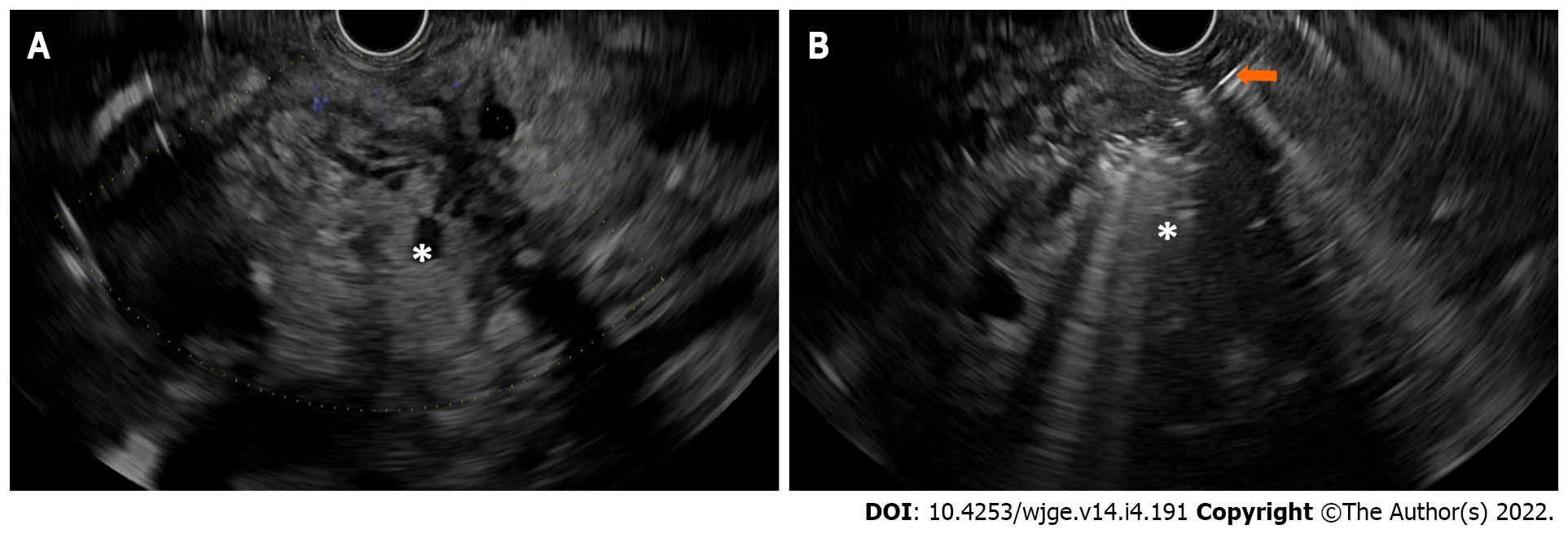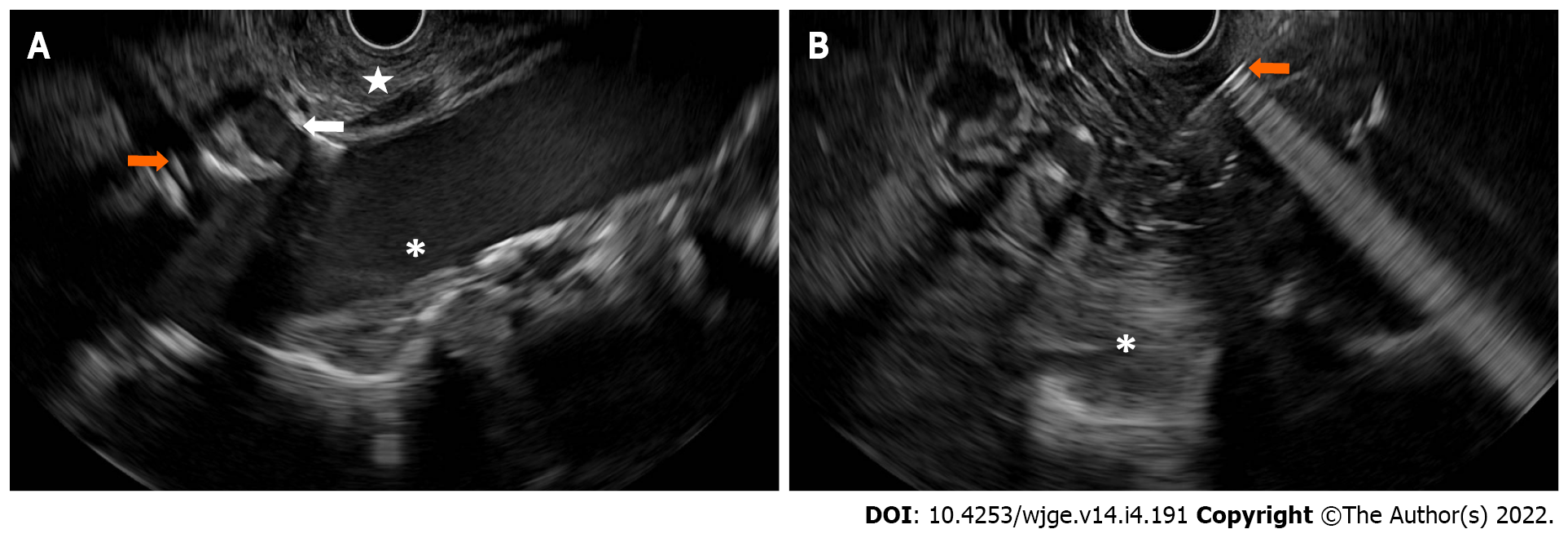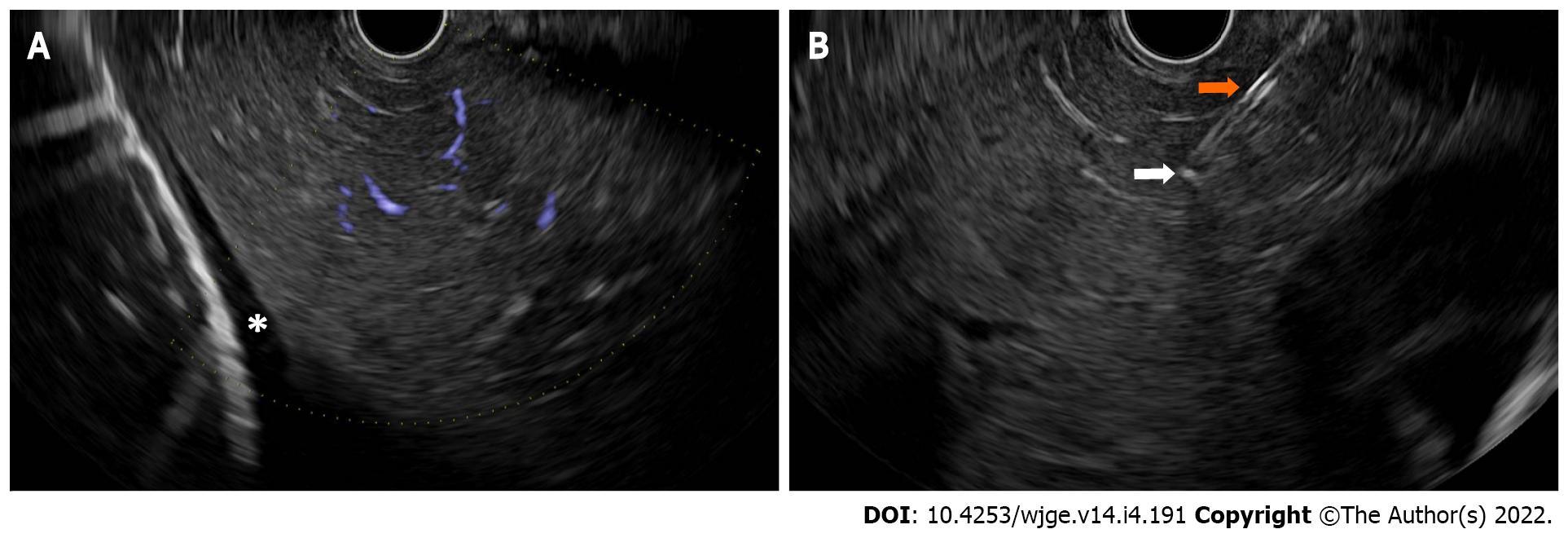Copyright
©The Author(s) 2022.
World J Gastrointest Endosc. Apr 16, 2022; 14(4): 191-204
Published online Apr 16, 2022. doi: 10.4253/wjge.v14.i4.191
Published online Apr 16, 2022. doi: 10.4253/wjge.v14.i4.191
Figure 1 Pancreaticoduodenal.
A: A hydrogel bleb (asterisk) in the pancreaticoduodenal groove. The arrows demonstrate the line of the duodenum. The arrowheads demonstrate the line of the pancreas; B: The size of the hydrogel bleb, measured at 15.2 mm by 10 mm.
Figure 2 Immunotherapy.
A: An ill-defined heterogeneous mass of known pancreatic ductal adenocarcinoma (asterisk); B: Fine needle injection for intratumoral therapy. The arrows demonstrate a 19-gauge needle. The asterisk indicates the hyperechoic blush of the injectate.
Figure 3 Endoscopic ultrasound guided celiac plexus neurolysis.
A: The structures while the echoendoscope is located at the posterior proximal gastric body/gastric cardia. A star demonstrates the pre-celiac region. The white arrow demonstrates the celiac trunk. A orange arrow demonstrates the superior mesenteric artery. An asterisk indicates the descending abdominal aorta; B: An area of hyperchoic blush of injected dehydrated alcohol (asterisk) delivered from a 19-gauge needle (arrow) for celiac plexus neurolysis.
Figure 4 Endoscopic ultrasound guided liver biopsy.
A: Liver parenchyma without major intervening intrahepatic blood vessels, which is an optimal location for endoscopic ultrasound-guided liver biopsy. An asterisk indicates a small amount of perihepatic ascites; B: An endoscopic ultrasound-guided liver biopsy using a heparin-primed wet-suction technique via a 19-gauge Franseen needle tip design. The hyperechoic tip of the needle (white arrow) and the shaft of the needle (orange arrow) must be visualized at all times during the fine needle biopsy of the liver.
- Citation: Kerdsirichairat T, Shin EJ. Endoscopic ultrasound guided interventions in the management of pancreatic cancer. World J Gastrointest Endosc 2022; 14(4): 191-204
- URL: https://www.wjgnet.com/1948-5190/full/v14/i4/191.htm
- DOI: https://dx.doi.org/10.4253/wjge.v14.i4.191












